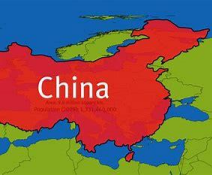Introduction
The production of portable electronics has emerged as a key sector in the rapidly changing industrial technological environment, influencing the direction of the future of computing. By 2024, the top 10 nations producing mobile phones will have a varied mix of financial strength and technical advancement. With a healthy output amounting to $127.9 billion and a stunning 48.4% revenue share, China tops the rankings. China, which is well-known for being the center of the global industrial economy, is still in charge of the mobile sector and makes major contributions to the globe’s supply chain.
Vietnam is next, with a 14.8% revenue share and a significant 39.1 billion dollars in output volume. Vietnam has become a major participant in the cellphone production sector because of its strategic placement as an important center to produce goods that have drawn the attention of many technology companies. Hong Kong also takes third place with a 12.2% revenue share and $32.3 million in output worth, thanks to its strong economic clout and widespread connections.
Despite having a 4.8% share of the global market, the nation’s $12.6 billion output value is indicative of its advanced technological capabilities and the existence of significant high-tech companies in the portable manufactured space. The Czech Republic, with 2.0% and $5.4 billion in output, and Germany, with a 2.1% market penetration and $5.7 billion in sales, highlight the uneven regional allocation of transportable factory capacity in Europe.
With a $5.3 billion total output and a 2.0% revenue share, Singapore demonstrates its importance in the worldwide cellular assembly scene. With a 1.9% market penetration and $4.93 billion in output, South Korea—which is well-known for its technical innovation— maintains its place as one of the most significant performers.
India, with a 1.8% sales share and $4.87 billion in output, has established itself as a prominent participant in the cellular goods sector, displaying the nation’s dedication to scientific autonomy. Lastly, Austria wins a 1.4% industry participation with a $3.7 billion output significance, underlining the remarkable influence of a globally portable assembly environment.
The complex interactions between technology advancements, national geopolitics, and economic considerations bring to light the changing nature of the handheld device manufacturing industry. Together, the most prominent 10 mobile production nations influence how the world connects, advances technologically, and develops economically in the age of digitization.
Here are the list of Top 10 Mobile Manufacturing Countries in the Year 2024
| Rank | Mobile Manufacturing | Market Share | Revenue (USD Billion) |
| 1 | China | 48.4% | $127.9 |
| 2 | Vietnam | 14.8% | $39.1 |
| 3 | Hong Kong | 12.2% | $32.3 |
| 4 | United States | 4.8% | $12.6 |
| 5 | Germany | 2.1% | $5.7 |
| 6 | Czech Republic | 2.0% | $5.4 |
| 7 | Singapore | 2.0% | $5.3 |
| 8 | South Korea | 1.9% | $4.93 |
| 9 | India | 1.8% | $4.87 |
| 10 | Austria | 1.4% | $3.7 |
China

Controlling Pressure: By 2024, China will be the world’s top producer of mobile devices. Holds a noteworthy 48.4% portion of the worldwide market for mobility assembly.
Monetary Effects: The manufacture of mobile devices brings in an astounding $127.9 billion in income.
World Impact: The conditions of the whole mobile sector are shaped by China’s production capacity.
Scientific Center: renowned for adopting cutting-edge technologies and producing excellent mobile gadgets.
Important Participant: Holds significant mobile industrial conglomerates, so reinforcing its standing as the worldwide champion.
Vietnam

In terms of worldwide mobile production in 2024, Vietnam comes in second.
Market Position: With a 14.8% proportion of the market, makes a major contribution.
Income: Brings in a healthy $39.1 billion in earnings.
Development: This shows that the smartphone manufacturing industry is expanding quickly. Entire Effects: This has a significant influence on how the globe’s cellular market is shaped. Competitive Advantage: Becomes a big participant in the production process by putting up a strong fight.
Hong Kong

As of 2024, Hong Kong is ranked third place in the world for smartphone technology.
Value: It makes up 12.2% of the marketplace’s percentage worldwide.
Income: Hong Kong’s cellphone manufacturing industry brings in around $32.3 billion annually.
Relevance: The area is vital to the production and shipment of handheld electronics.
Global Presence: Hong Kong’s production industry for mobile devices demonstrates its economic significance worldwide.
Competitive Advantage: Hong Kong’s advantage in the international market is strengthened by its manufacturing sector.
United States

Fourth place in the list of the highest ten nations producing mobile phones in 2024.
Volume: Makes up 4.8% of the world market for mobility assembly.
Income: Brings roughly $12.6 billion from the production of mobile devices.
Important: Plays a significant part in the worldwide environment of this sector.
Monetary Effects: Highlights the US economy’s resilience in the technological industry.
Retains an advantage in the ever-evolving mobility industry.
Germany
https://www.unplash.com/
As of 2024, Germany is ranked sixth in the world in the smartphone industry.
Its percentage of the marketplace’s segment is 2.1%.
Income: Produces $5.7 billion in sales from the manufacture of mobile devices. Germany is a major player in the European portable production sector.
Financial Effects: The nation’s economy is significantly boosted by its outstanding production skills.
Innovative Developments: Germany, which is renowned for its cutting-edge technology, brings new ideas to the world of mobile manufacturing.
Czech Republic

Place in the world rankings: The Czech Republic is ranked sixth for smartphone production.
Share of Market: Making up 2.0% of the total revenues in the sector.
Income: $5.4 billion is made from the production of mobile devices.
Relevance: Has a noteworthy impact on the smartphone industrial scene in Europe.
Superior Blade: Well-known for its innovative technology and superior production skills.
Effects on the world: Increases variety in the smartphone manufacturing process worldwide.
Singapore

Positioning: In terms of smartphone production worldwide, Singapore is ranked eighth.
Share of the Market: It commands a sizeable 2.0% of the sector.
Income: Singapore’s contribution to the cellular production sector is $5.3 billion.
Globally Position: its position indicates a significant influence on the industrial sector.
Monetary Effects: The money made highlights Singapore’s economic importance in manufacturing mobile devices.
Competitive Advantage: Singapore’s involvement in the sector demonstrates its technological superiority and productivity.
South Korea

In terms of classification, South Korea is ranked ninth in the world for mobile production.
Market Position: In 2024, it will account for 1.9% of the overall marketplace.
Income Development: The mobile production sector in South Korea brings in $4.93 billion annually.
Important Participants: Home to significant tech behemoths like Samsung, an important force in the manufacture of smartphones.
Scientific Impact: Well-known for cutting-edge technological advancements in the cellular sector.
Effect on the World: South Korea is still a major force in determining the direction of the mobile industry worldwide.
India

In 2024, India will become a major force in the mobile phone industry. With a 1.8% market share, the nation is ranked ninth in the world. The mobile production sector in India brings in a healthy $4.87 billion annually. India’s increasing importance in the sector may be attributed to its ongoing efforts and expenditures, as seen by its proportion of the worldwide cellular supply.
Austria

In terms of cellular production worldwide, Austria ranks eighth in 2024.
The nation makes up about 1.4% of the marketplace’s percentage overall. Austria earns $3.7 billion from the production of mobile devices.
Austria is a major participant in the sector, although being a lesser participant. The nation’s participation draws attention to the varied global mobility manufacturing environment.
Austria’s participation demonstrates the country’s economic participation in the technology industry.
Conclusion
In conclusion, the scenario involving cell phone production in the year 2024 reveals China as the undisputed universal manager, controlling a startling 48.4% of the marketplace’s position with a gargantuan income of $127.9 billion. This supremacy, which is a result of its vast facilities and sophisticated industrial skills, highlights China’s dominant status as the main center for mobility manufacturing. After a significant lapse, Vietnam becomes a significant participant with 14.8% of the marketplace participation and $39.1 billion in income. Having a 12.2% stake, or $32.3 billion, Hong Kong maintains its position as a major player in the worldwide mobile production sector.
With their advantages and capacities, the United States, Germany, the Czech Republic, Singapore, and South Korea all make significant contributions to the world economy. With a 4.8% share, the United States produces $12.6 billion, demonstrating its technical strength. With 2.1% and 2.0% of the market, accordingly, Germany and the Czech Republic generate a combined total of $5.7 billion and $5.4 billion in revenue, highlighting their prowess in precise fabrication and assembly. With a 5.3-billion-dollar turnover and a 2.0% percentage of the market, Singapore has become a major participant in the worldwide mobility industry networks.
Reputed for its technical prowess, South Korea asserts a 1.9% contribution or $4.93 billion in income. India, a country with a rapidly expanding mobile industry, accounts for 1.8% of the worldwide smartphone assembly marketplace, bringing in $4.87 billion. Austria provides $3.7 billion and has a 1.4% stake, indicating that it is a significant player in the business.
The spread of portable production around the globe illustrates the tactical responsibilities that different nations perform and the interdependence of industries. Even while China continues to hold the spotlight, other countries make substantial contributions as well, each utilizing its advantages in creativity, facilities, and equipment. The cooperative endeavors of these nations mold the ever-changing and developing terrain of the mobility goods industry, whereby each participant offers their input to the worldwide marketplace. Looking ahead, these patterns highlight how crucial technology developments, regional market factors, and international collaboration will be in determining the course of handheld industrial in the years to come.
Engineer | Content Writer
Want to be a catalyst for a positive change in the world
